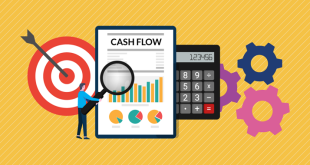An emergency fund is essential for financial security, providing a safety net for unexpected expenses like medical bills, car repairs, or job loss. Building an emergency fund quickly can seem challenging, but with a strategic plan and disciplined approach, you can accumulate the necessary savings in just six months. Here are practical steps to help you build an emergency fund in half a year.
1. Determine Your Savings Goal:
The first step is to determine how much you need to save. A common recommendation is to save three to six months’ worth of living expenses. Calculate your monthly expenses, including rent or mortgage, utilities, groceries, transportation, insurance, and other essential costs. Multiply this amount by three to six to set your emergency fund goal.
2. Assess Your Current Financial Situation:
Evaluate your current financial situation to understand how much you can realistically save each month. Review your income, expenses, and existing savings. Identify areas where you can cut back to allocate more funds towards your emergency fund. This assessment will help you set a feasible monthly savings target.
3. Create a Budget:
A budget is crucial for managing your finances and prioritizing savings. Track your income and expenses to understand your spending patterns. Allocate a specific amount towards your emergency fund each month and adjust your budget to accommodate this new priority. A well-structured budget ensures you stay on track with your savings goal.
4. Reduce Unnecessary Expenses:
Cutting back on non-essential expenses can free up more money for your emergency fund. Review your spending habits and look for areas where you can save, such as dining out, entertainment, and subscriptions. Even small changes in your spending can add up over time and boost your savings.
5. Increase Your Income:
Boosting your income can significantly accelerate your savings efforts. Consider taking on a part-time job, freelancing, or starting a side hustle. Use the extra income exclusively for your emergency fund. Every additional dollar you earn helps you reach your goal faster.
6. Automate Your Savings:
Automating your savings ensures consistency and eliminates the temptation to spend. Set up automatic transfers from your checking account to your savings account each month. This approach makes saving effortless and helps you stay committed to your goal.
7. Use Windfalls Wisely:
When you receive unexpected money, such as a tax refund, bonus, or gift, use it to boost your emergency fund. Windfalls can provide a significant one-time increase to your savings, helping you reach your goal faster.
8. Open a Dedicated Savings Account:
Keep your emergency fund separate from your regular checking account to avoid the temptation to spend it. Open a dedicated savings account, preferably one with a high interest rate, to grow your savings faster. Having a separate account also makes it easier to track your progress.
9. Track Your Progress:
Regularly monitor your savings progress to stay motivated and make adjustments as needed. Use budgeting apps or spreadsheets to track your contributions and ensure you’re on target to meet your goal. Seeing your savings grow can provide encouragement and reinforce your commitment.
10. Avoid New Debt:
While building your emergency fund, avoid taking on new debt. Using credit to cover expenses can undermine your savings efforts and increase your financial burden. Focus on living within your means and prioritizing your emergency fund.
11. Plan for Irregular Expenses:
Account for irregular expenses, such as car maintenance, medical bills, and annual insurance premiums, in your budget. Set aside a small amount each month to cover these costs without dipping into your emergency fund. Planning for irregular expenses helps you maintain your savings progress.
12. Stay Disciplined and Committed:
Building an emergency fund requires discipline and commitment. Stay focused on your goal and remind yourself of the importance of having a financial safety net. Avoid the temptation to use your emergency fund for non-emergencies and stay committed to your savings plan.
Conclusion:
Building an emergency fund in six months is achievable with a strategic plan and disciplined approach. Start by determining your savings goal and assessing your current financial situation. Create a budget, reduce unnecessary expenses, and increase your income to boost your savings efforts. Automate your savings, use windfalls wisely, and open a dedicated savings account to stay on track. Regularly monitor your progress, avoid new debt, and plan for irregular expenses to maintain your savings momentum. Stay disciplined and committed, and you’ll have a robust emergency fund ready to provide financial security in just six months.


